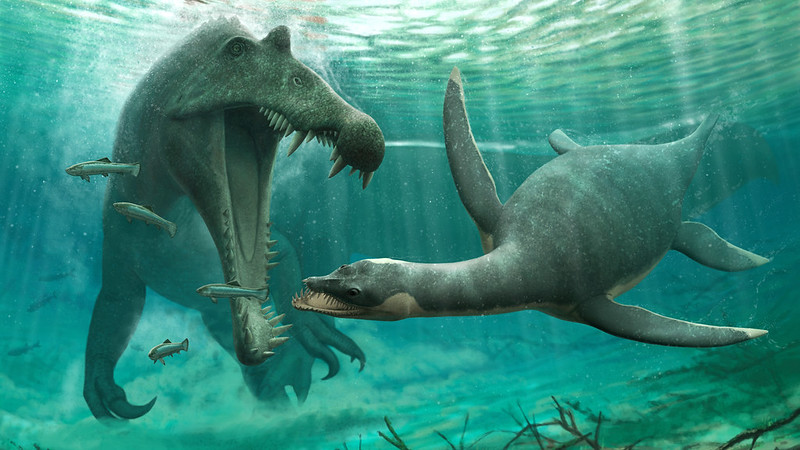
The discovery of new fossils is leading British scientists to conclude that the past existence of a Loch Ness monster was “plausible.”
The suggestion came after researchers found fossils of small plesiosaurs, long-necked marine reptiles from the age of dinosaurs, in a 100-million-year-old river system that is now Morocco’s Sahara Desert, suggesting they may have lived in freshwater.
Believers in the Loch Ness monster have long believed that the lake-dwelling creature could be a prehistoric reptile similar to the plesiosaur, but critics have maintained that the monster could not live in freshwater.
The new finding, made by researchers at the University of Bath in the UK, suggests otherwise.
The Loch Ness Monster, a creature in Scottish folklore
The Loch Ness Monster, affectionately known as Nessie, is a creature in Scottish folklore said to inhabit Loch Ness in the Scottish Highlands.
It is often described as large, long-necked, and with one or more humps protruding from the water. Popular interest and belief in the creature has varied since it was brought to worldwide attention in 1933. Evidence of its existence is anecdotal, with a number of disputed photographs and sonar readings.
The fossils discovered in the Morocco desert include bones and teeth from three-meter-long adults and an arm bone from a 1.5-meter-long baby. They hint that these creatures routinely lived and fed in freshwater, alongside frogs, crocodiles, turtles, fish, and the huge aquatic dinosaur, Spinosaurus.
These fossils suggest the plesiosaurs were adapted to tolerate freshwater, possibly even spending their lives there much like today’s river dolphins.
The fossils include vertebrae from the neck, back, and tail, shed teeth, and an arm bone from a young juvenile.
“It’s scrappy stuff, but isolated bones actually tell us a lot about ancient ecosystems and animals in them [, and they’re] so much more common than skeletons…they give you more information to work with” said Dr. Nick Longrich, corresponding author on the paper.
“The bones and teeth were found scattered and in different localities, not as a skeleton,” Dr. Longrich said. “So each bone and each tooth is a different animal. We have over a dozen animals in this collection.”
Fossils of teeth show prehistoric creatures lived in freshwater
Whilst bones provide information on where animals died, the teeth are interesting because they were lost while the animal was alive, so they show where the animals lived.
What’s more, the teeth show heavy wear, like those fish-eating dinosaur Spinosaurus found in the same beds.
The scientists say that implies the plesiosaurs were eating the same food, chipping their teeth on the armored fish that lived in the river. This hints that they spent a lot of time in the river rather than being occasional visitors.
While marine animals such as whales and dolphins wander up rivers, either to feed or because they’re lost, the number of plesiosaur fossils in the river suggest that’s unlikely.
A more likely possibility is that the plesiosaurs were able to tolerate fresh and salt water, as some whales such as the beluga whale do.
It’s even possible that the plesiosaurs were permanent residents of the river like modern river dolphins. The plesiosaurs’ small size would have let them hunt in shallow rivers, and the fossils show an incredibly rich fish fauna.
Dr Longrich said: “We don’t really know why the plesiosaurs are in freshwater.”
“It’s a bit controversial, but who’s to say that because we paleontologists have always called them ‘marine reptiles’, they had to live in the sea?” he questioned. “Lots of marine lineages invaded freshwater.”
See all the latest news from Greece and the world at Greekreporter.com. Contact our newsroom to report an update or send your story, photos and videos. Follow GR on Google News and subscribe here to our daily email!



